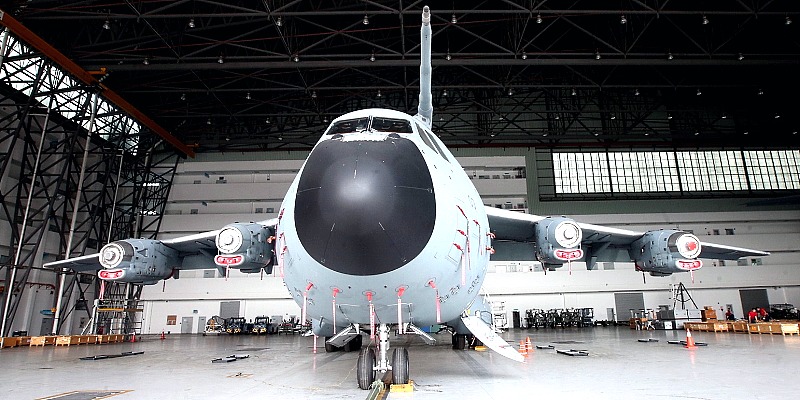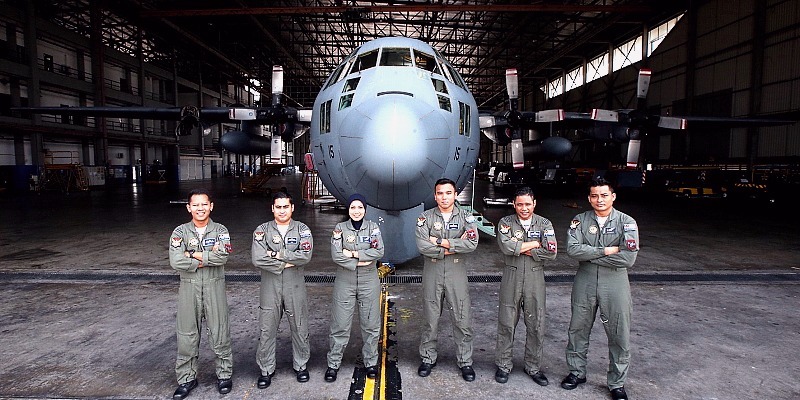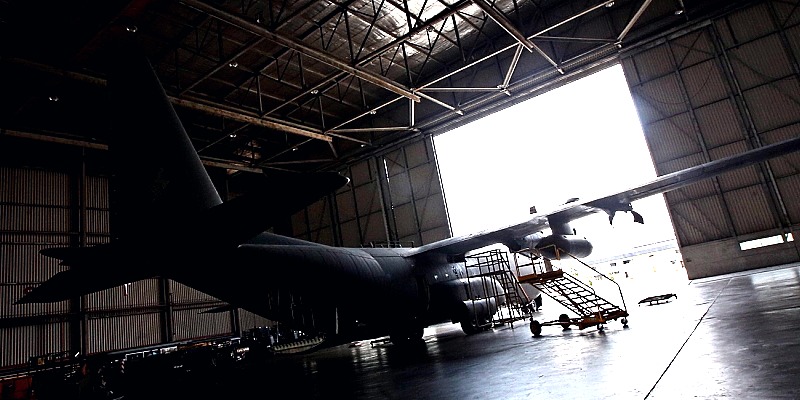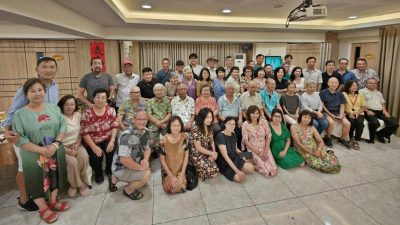While we may be familiar with the ambulance and fire & rescue department which are always ready to help the distressed and save lives, few have actually heard of Mercy Flight, our very own flying doctor service.
This service is only deployed when utterly necessary, often with a helicopter or a jet. Providers of this service include government as well as private entities.
In addition to ferrying the sick and patients requiring organ transplants, it also transports injured or fallen soldiers from a war zone or Malaysians stranded in a country plagued by political unrest.
To better understand this special rescue service, we visited Subang air base with the help of the Royal Malaysian Air Force and took a glimpse into one of the aircraft used for the rescue mission, Airbus A400M.

Royal Malaysian Air Force assistant commander KOL Norazman Ismail, 55, said Mercy Flight service is a free aviation mission provided by the Air Force, not only to ferry severely ill patients to the hospital but also victims of a natural disaster to safer grounds.
Whenever a service request is received, he will dispatch manpower and aircraft type based on the actual situation.
For longer range flights such as between East and West Malaysia, a fixed wing aircraft will typically be mobilised.
“As for helicopters, they are only mobilised where there are geographical restrictions as they are not suitable for longer haul flights, not to mention their slower speed and inability to cruise at higher altitudes.
“That said, fixed wing aircraft require a bigger site for landing, and we need to know the local environment well and look for a suitable landing spot, usually a school field or any open space.”
Currently RMAF flying medical service has a fleet of four different aircraft types in use, three fixed wing aircraft, including Airbus, and one model of helicopters.
The service can be divided into three types, namely:
Medevac (Medical Evacuation), transporting victims from the site of incident or a medical institution to another medical institution for further medical attention; Casevac (Casualty Evacuation), transporting injured or seriously ill personnel from a war zone; and Bodevac (Body Evacuation), transporting the remains of dead individuals from remote areas back to the country.
Although the RMAF is not a medical unit nor does it have a dedicated flying medical service team, all RMAF personnel will have to go through some basic training to lift a patient up and down the aircraft so that he or she can be safely transported to the hospital.
Norazman said the training is carried out periodically to ready the personnel for any emergency mission, adding that the hospital may also send the doctors there for training.
Normally when the hospital feels that a patient needs to be airlifted, it will first contact the ministry of defence and the military doctors will try to get a better picture of the patient’s situation with hospital authorities to assess flight suitability and the equipment needed, among other things, before applying to the Air For chief commander.
“Basically, all Air force personnel have gone through the training and are ready to take off any time. They also know what equipment needs to be taken along.
“I will make arrangement for the aircraft and manpower and liaise with the hospital before setting off.
“Of course, this will also depend on aircraft availability. If all the aircraft have already been mobilised, we will then dispatch non-mission aircraft to carry out the mission.

Another point of consideration is the weather, and as such they will always check the local weather and draw up the most optimal flight path.
“As a matter of fact, we will update the weather forecast every half an hour in preparation for any emergency mission.”
Norazman said it is utterly important to send the patient to the hospital safely within the shortest time possible, as the patient may not be able to take the cabin pressure at high altitudes. Because of that, the pilot will have to readjust the flight path and altitude to make sure the patient is safely airlifted to hospital.
“There was this case in Sarawak when we were requested to airlift a patient to West Malaysia for medical attention. However, upon evaluation, we felt that the patient’s lungs might not be able to take the high pressure and a long-range flight could endanger the patient. We had to reject the application in the end.”
He also said hospitals that require flying medical service are normally located in East Malaysia or the east coast, such as Kota Bharu and Kuala Terengganu.
In East Malaysia, the service is usually for intra-state such as from a Sandakan hospital to Kota Kinabalu hospital because of the poor road conditions.
“Additionally, medical facilities and equipment in East Malaysia are also less sophisticated and they have fewer specialists too. Some of the more urgent or complicated cases may have to be referred to West Malaysia for further treatment. Besides, organ transplant cases also need to be sent to West Malaysia.
“Normally patients that need the airlift service are those requiring heart surgery or a newborn with congenital heart defects.”
The Air Force aside, the PDRM and fire and rescue department also provide air rescue services.
Norazman, who has served the Air Force for 37 years and has stopped flying now, related an unforgettable experience airlifting an old man from Kota Bharu to Kuala Lumpur, but was notified by a doctor onboard halfway during the flight that the patient had died. Nevertheless, the mission still had to be carried out to send the patient to the hospital.
“We usually inform the hospital 30 minutes before arrival so that the hospital authorities can get the ambulance ready at the airport.
“If we are using a helicopter, we will send directly to the hospital.”
Back in the 1980s and 90s, most of the Orang Asli were still living inside the jungles where medical facilities were rudimentary. When a patient requires medical attention, the village chief would contact the authorities and the Air Force would arrange to send a helicopter to pick up the patient from the jungle.
“As the Orang Asli were living in the jungle, it was impossible for a fixed wing aircraft to land there and we had to use a helicopter instead.
“Other than the patient, the family was also allowed onboard.”

In addition to airlifting patients, Mercy Flight service also provides humanitarian assistance and disaster relief (HADR).
When a country is experiencing unrest, RMAF will also dispatch its team to send Malaysian citizens home, such as during the war in Yemen, or the earthquake in Nepal.
There are normally three to seven people in each rescue mission, including a pilot, co-pilot, navigator, flight engineer, steward and two medical personnel depending on the aircraft type.
Pilot KAPT Raja Mohamad Fairul said a team normally comprises seven people for a fixed wing aircraft.
The pilot and co-pilot are responsible for manning the aircraft. The navigator will monitor the flight path and when the situation arises, realign the flight path.
“Normally we have three loadmasters or stewards responsible for things like equipment preparation, electrical supply of rescue equipment and coordination with the doctor, including a female officer to take care of the patient.”
How long does it take for the team to get ready after an order has been received?
Flight engineer MEJ Mohd Aerin said generally a hospital would notify one day in advance.
“But in an emergency, at least one and a half hours because there is plenty to prepare.”
Sometimes there may not be any aircraft available and some of the teams that have been dispatched may have to be reverted to flying medical service and fly direct to the designated destination.
“But of course before this is done, we have to make sure that all the necessary equipment is in place, otherwise we may have to ask whether the hospital has the equipment ready. Worst come to the worst we may have to fly to the nearest camp to get equipped before continuing with the flight.”
Navigator KAPT Muhammad Firdaus said his job was to ensure flight safety. In case of an emergency, he will have to know the surroundings very well and look for the nearest point for landing while coordinating with ground personnel before proposing to the pilot to divert the flight path.
“If we are carrying a patient and something happens during the flight, we will have to look for the nearest airport or anywhere we can land. The ground personnel will notify the hospital to send an ambulance there on standby.
“If we have to divert our path in the middle of a mission, as Aerin has mentioned, I have to make sure we have sufficient fuel to reach the destination.”
Stewardess SJN Najiha’s said her job is to take care of the patient and his or her family, and assist the cabin personnel.
She said the patient’s body conditions could change during the flight and as such she has to closely monitor the patient’s situation and report to the pilot and navigator.

ADVERTISEMENT
ADVERTISEMENT


































